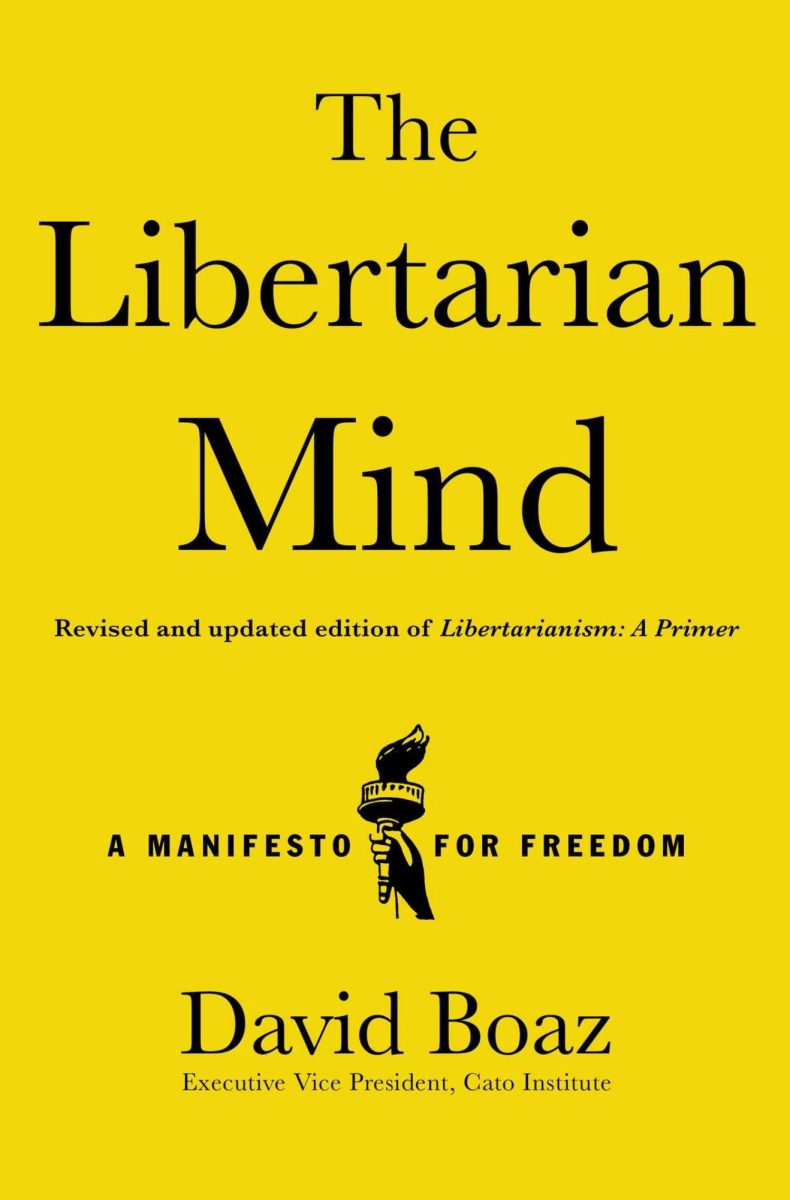David Boaz was the executive vice president of the Cato Institute, a prominent libertarian think tank based in Washington D.C., when he published “The Libertarian Mind: A Manifesto for Freedom.” Retiring his position in 2022, Boaz worked with the Cato Institute for over 43 years and continued to be a prominent voice in libertarian politics until shortly before his death in June. “The Libertarian Mind: A Manifesto for Freedom” — a 2015 edition of his earlier book, “Libertarianism: A Primer” from 1997 — serves as an easy-to-follow introduction to libertarian philosophy and its possible applications.
Often derided, libertarianism and its focus on limited government might be worth studying, as politics in the United States are dominated by two parties that have both largely embraced expansive government as an acceptable means to secure their various constituencies’ preferences.
“The Libertarian Mind: A Manifesto for Freedom” is not a comprehensive proof of libertarian ideas and policies, nor does it profess to be; rather, Boaz has provided insight into a perspective. It is a rewarding reading for anybody who (like myself prior to reading this book) may not be familiar with libertarianism. Readers might think twice before dismissing libertarians outright.
Boaz describes libertarianism as simply the continuation of and confidence in the principles of classical liberalism — the ideas regarding limited government and individual freedom developed by Enlightenment thinkers like John Locke, Adam Smith and David Hume, and espoused by America’s founders.
Limited government is central to libertarianism, and much of what Boaz advocates for in practice is the rolling back of the government’s intervention in society. Boaz’s libertarianism, however, is not anarchy. On the contrary, he says limited government is a “natural condition for human flourishing” and libertarianism is based on maintaining the rule of law in a society, according to Boaz (364). For a free society to flourish, maintaining an equitable environment by protecting peoples’ rights is a legitimate use of government.
Government delineation of rights, however, has less to do with specific allowed behaviors or actions (which are implicit in a free society) and more with creating a framework that guarantees the individual the freedom to do as they please “so long as he does not infringe on the freedom of others,” says Boaz (134). Governments should protect “life, liberty and property” (per John Locke), but further interference tends to be undesirable and even untenable.
Not only can markets, civil society and voluntary contracts produce most desirable benefits on their own, but Boaz further argues that government discoordinates when invoked, and in fact proves detrimental to societies and economies. The doctrine of limited government, while not promising utopia, a point Boaz emphasizes, is on the whole most propitious.
And libertarianism has not only to do with letting markets run free, despite this being a dominant theme in the discussion: a society that abides by libertarianism’s non-interventionist philosophy will be deregulated in the social as well as economic spheres. Although utilizing a different method (endeavoring to restrain rather than mobilize government), libertarianism’s limited government is not totally incompatible with modern liberalism: Boaz’s libertarian government must not meddle in access to abortion, or marriage, or the ability to form unions and bargain collectively.
Questions remain, however, about what exactly should be provided by a government to create the ideal environment in which a free society might prosper, and just what it takes to maintain one. Boaz’s treatment of his ideology is as if it is unnecessary to debate and draw a line somewhere, like there is a clear distinction between legitimate and illegitimate government functions.
But it is conceivable that government should do much more for its citizens than imagined back in the eighteenth century, whether that’s ensuring affordable healthcare, or making an effort to deconstruct existing systemic biases that — to suppress and correct racism and sexism that, left alone, surely undermine the best promises of a libertarian system.
Boaz’s history of ideas and practice also sidesteps any implications of the failed experiment that was the Articles of Confederation; or the problems created by the lack of a national consensus and the discretion of non-federal-government authorities and associations to, themselves, derange free society.
The presented case for libertarianism would benefit from a reduced focus on communism and socialism, both of which he criticizes frequently throughout. It would benefit, instead, from a greater focus on what libertarianism can do for us today taking into account complex realities of an imperfect society.
The book’s best contribution is probably not in generating libertarians. What is more valuable is its encouragement to be more optimistic about the services of markets and civil society. Boaz also raises a few interesting points about where libertarianism may contribute, if only as the better of imperfect options. Even if government intervention in society and the economy is appealing on its face, expanding the authority of government and using it to apply universal mandates can inflame issues.
The key to making some of our problems manageable, like “de-escalating the cultural war,” may simply be the “depoliticization of our cultural disagreements” and pursuit of their resolution outside of central government authority, Boaz claims (143). Better than the government endorsing certain grounds for marriage, it might rather remove itself from the role of issuing licenses.
A democratic decision in the U.S. almost always constitutes the unilateral imposition of a majority preference over others who might not be amenable. The libertarian option as described by Boaz is, simply, don’t make people live under a system they do not agree with if it is not necessary.
Government redistribution or management of wealth, similarly, could incentivize various interests to use government to advocate for policies that benefit themselves or reflect their preferences for the use of the budget. Class conflict or tension between demographics may only be aggravated by groups being pitted against each other in this way.
If we are not all to be libertarians, it might be good to have one in the room. A libertarian voice, even on a road ultimately to more expansive government, could help inform what is desirable and feasible. Especially in a very polarized environment, the best path to the same ends may be less — and not more — government. Freedom not through extensive protective legislation, but conservative use of sweeping regulation.
“The Libertarian Mind: A Manifesto for Freedom” will likely not convince you that limited government to the degree advocated is best (lest we have a very disjointed society); but even for those who are confident that government should play a more active role in society, the libertarian perspective Boaz exhibits is one worth at the very least being aware of.









